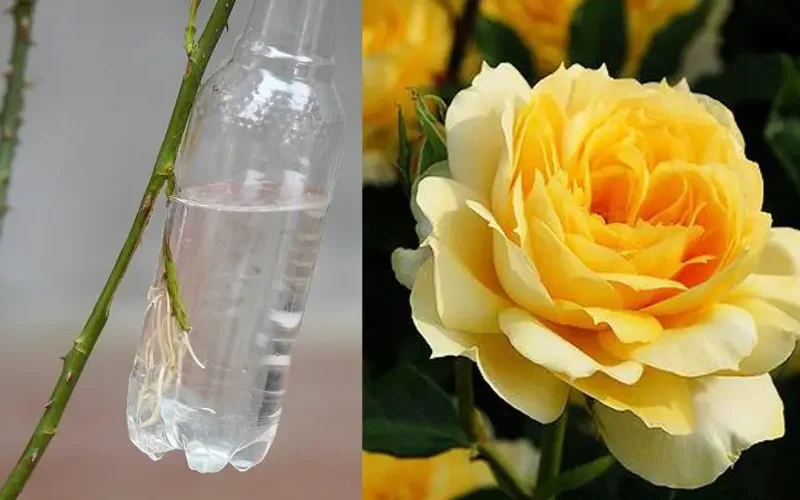
Advanced Tips for Success:
- Optimal Timing: The best time to take rose cuttings is in the early morning when the plant is fully hydrated. This ensures the cuttings are as fresh as possible, increasing their chances of rooting successfully.
- Selecting Branches: In addition to choosing healthy branches, aim for those that have recently bloomed. These are in a growth phase and may root more readily.
- Cutting Technique: When cutting branches, use a clean, sterilized pair of pruning shears to prevent introducing diseases. A diagonal cut increases the surface area for water uptake and rooting hormone application, if used.
- Water Quality: Use distilled or rainwater for the best results, as tap water may contain chlorine or other chemicals that could affect the rooting process.
- Air Circulation: Ensure there’s good air circulation around the cuttings to reduce the risk of fungal growth. However, avoid placing them in a drafty area, which could dry them out.
- Rooting Medium Alternatives: While water is an easy medium, some gardeners have success using a mix of perlite and peat or vermiculite as a rooting medium, which can offer a more stable environment for root growth.
Troubleshooting Common Problems:
- Rotting Stems: If cuttings start to rot, they may not have been healthy, or the water might need more frequent changing. Try starting with new cuttings and ensure the water is fresh and clean.
- No Roots Developing: Some rose varieties are more challenging to root. Patience is key, as some cuttings take longer to develop roots. Using a rooting hormone can help stimulate growth.
- Mold Growth: Mold can develop if the air around the cuttings is too stagnant. Increase air circulation and change the water regularly to address this issue.
- Transplant Shock: When moving cuttings from water to soil, they may experience shock. To ease the transition, gradually introduce soil to the water or use a hydroponic air stone to oxygenate the water and encourage stronger root systems before transplanting.
Additional Considerations:
- Hardening Off: Before planting rooted cuttings outdoors, gradually acclimate them to outdoor conditions over a week or so. This process, known as hardening off, reduces stress and improves the chances of survival.
- Fertilization: Once cuttings have established roots and are growing in potting soil, begin to fertilize lightly to support growth. Choose a balanced, slow-release fertilizer suitable for roses.
By incorporating these detailed tips and troubleshooting advice into your propagation efforts, you can enhance the success rate and enjoy a more rewarding experience as you expand your rose garden. Remember, patience and attention to detail are key components of successful plant propagation.
